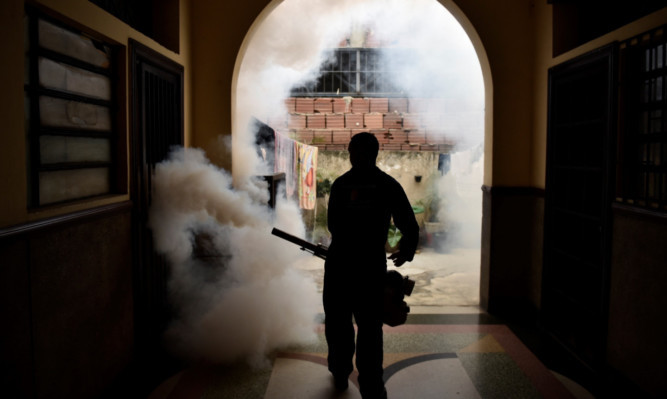for countless generations the midgie has been the bane of Highlanders. The minute pests have caused huge distress to locals, campers and holidaymakers alike.
There are some 37 varieties of the wee blighters in Scotland, although of these it is the Highland midge the dreaded C impunctatus which accounts for 90% of the attacks on human beings.
One of my predecessors as keeper of the Great Seal of Scotland was Tom Johnston, the finest Secretary of State in history. He had many great successes to his name in his tenure of office. He established both the Hydro Electric Board to mobilise the “power of the glens” and the Scottish Council for Development and Industry to reindustrialise the nation.
But even the great Mr Johnston was defeated by the mighty midgie legions. The wartime Secretary of State embarked on a scheme to eradicate the midgie by volunteering large tracts of Loch Lomondside for antimalarial defoliant experiments. He was convinced that if he could blast the midgie he could boost Highland tourism.
However, even DDT and Agent Orange were no match for the midge, which emerged triumphant from the chemical assault. And so we are where we are, still scratching! There is a complete chemist shop of lotions and potions but no full-proof protection.
Notwithstanding any of the above, recent events should give us pause for thought about these minute creatures. Indeed, it may be time for a total midgie rehabilitation. Far from being Scotland’s greatest pest, it may actually be our greatest protection against something far more sinister.
Nature abhors a vacuum and if there was no midgie then its position in the food chain would be replaced by something else and, potentially, something much, much worse. Like many biting insects, the only damage is done by the pregnant female. The male midge is an inoffensive being who knows his place.
However, the redeeming feature of the female impunctatus and its lesser sistern is that none of them carry any known human disease. In other words, our dominant biting insect causes no damage beyond the initial discomfort and, similarly, the handful of mosquito varieties which we have in these northern climes are also non-carriers of disease.
How different this Scottish position is from the emergency situation now being faced by a substantial part of the globe. Most of us had never heard of the zika virus until a few weeks ago, although it has been known about since the 1940s, when it was first isolated in the Zika forest area of Uganda. Now it is one of the biggest stories on the planet.
Zika finally reached the Americas only last year but now has reached pandemic levels and is casting a shadow over the Brazil Olympics. The Centre of Disease Control in the United States has issued a series of sober warnings which until recently would have been thought of as the stuff of science fiction.
The mosquito-borne virus has no available vaccine or treatment and has been strongly linked in Brazil at least to microcephaly, the birth defect which involves the fetus’ brain. Now that the virus has been found to be present in bodily fluids, a full-scale health panic has resulted particularly after its contraction by sexual transmission was confirmed in America.
The Brazilian president, Ms Dilma Rousseff, has “declared war” on the disease-carrying Aedes aegypti mosquito. Colombian President Juan Manuel Santos has pointed out that they have no related cases of zika and microcephaly. However, his health minister has reported a “causal connection” between zika and a rare nerve disorder which has already resulted in three deaths.
There’s still a great deal we don’t understand about this developing situation and therefore a very precautionary approach is understandable. As the world’s resources are mobilised to fight zika, then no doubt it shall be overcome in the same way as ebola was contained and forced back once it started to threaten the western world.
Perhaps in a few years it shall even lead to gains, as the same mosquito also carries the debilitating, and sometimes fatal, yellow fever and dengue viruses.
In the meantime, I suspect most pregnant women and their partners will be reluctant to visit any mosquito-infested country. This will play havoc with the visitor and tourist industries of these countries, as well as causing a huge amount of human suffering and misery.
And that brings us back to the billions of midges in Scotland irritating, infuriating, exasperating certainly but disease free and totally dominant. Nothing else gets a look-in while the midgie reigns supreme. Therefore let us thank our lucky stars for the Scots midgie.
